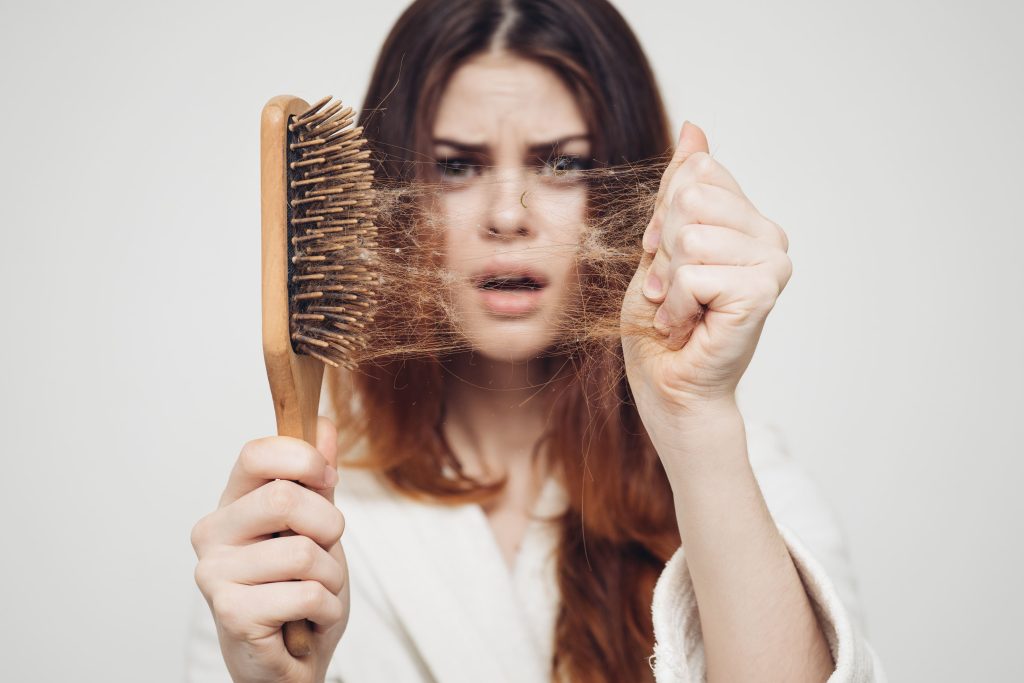Back to General Dermatology

What is Hair Loss?
Hair loss refers to the partial or complete loss of hair from the scalp or other areas of the body. It can occur due to various factors, including genetics, hormonal changes, medical conditions, medications, and lifestyle factors. Understanding the underlying cause is crucial in determining the most effective treatment approach.
Common Causes of Hair Loss
- Androgenetic alopecia: This is the most common form of hair loss and is hereditary. It results in gradual thinning of hair in both men and women.
- Telogen effluvium: A temporary condition that occurs when a significant number of hair follicles enter the resting “telogen” phase, resulting in excessive shedding of hair. Telogen effluvium is typically preceded by an emotion of physical stressor a few months before.
- Alopecia areata: An autoimmune condition where the immune system attacks the hair follicles, leading to patchy hair loss. Extreme cases can result in complete loss of hair on the scalp (alopecia totalis) or on the entire body (alopecia universalis).
- Hormonal changes: Fluctuations in hormone levels due to pregnancy, childbirth, menopause, or thyroid disorders can cause hair loss.
- Medical conditions and treatments: Certain medical conditions like scalp infections, autoimmune diseases, and cancer treatments (chemotherapy, radiation) can lead to hair loss.
Types of Hair Loss
- Male pattern baldness (androgenetic alopecia): Characterized by a receding hairline and thinning hair on the crown and temples of the head in males.
- Female pattern hair loss (androgenetic alopecia): Typically causes thinning hair on the crown and widening of the center part while preserving the front hairline in females.
- Alopecia areata: Presents as patches of complete hair loss that can rarely progress to total baldness on the scalp or other areas of the body.
- Telogen effluvium: Is characterized by excessive shedding of hair all over the scalp resulting in a diffuse hair thinning.
- Traction alopecia: Caused by constant pulling or tension on the hair, often due to hairstyles like tight ponytails or braids.
- Frontal fibrosing alopecia: Is characterized by recession of the front and sides of the hairline in a band like pattern. The skin becomes pale and shiny without visible hair follicle openings. When active, redness and scale is visible around involved hairs. It spares rare “lonely hairs”.
Treatment Options for Hair Loss
- Topical medications: Minoxidil (Rogaine) is an over-the-counter topical treatment that can promote hair growth and slow down hair loss in both men and women.
- Prescription medications: Finasteride (Propecia), spiroloactone and minoxidil are oral medications that slow down hair loss and promote hair regrowth.
- Platelet-rich plasma (PRP) therapy: This procedure involves injecting a concentration of the patient’s own platelets into the scalp to stimulate hair growth.
- Hair transplantation: In cases of permanent hair loss, hair transplantation procedures can be performed to transplant hair follicles from donor areas to areas of thinning or baldness.
Hair loss can have a significant impact on one’s self-esteem and quality of life. Fortunately, there are various treatment options available to address different types of hair loss. If you are experiencing or are concerned about hair loss, please call and schedule an appointment with one of our highly skilled board-certified medical providers who will provide advice and develop a personalized treatment plan.
